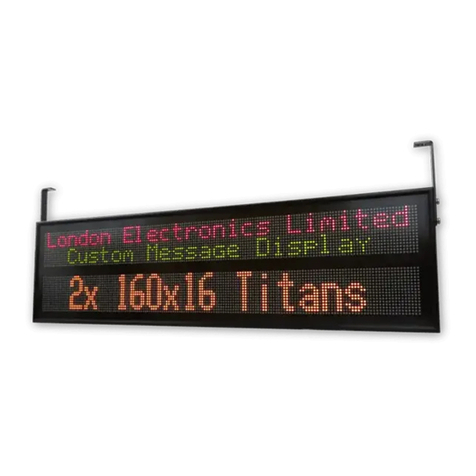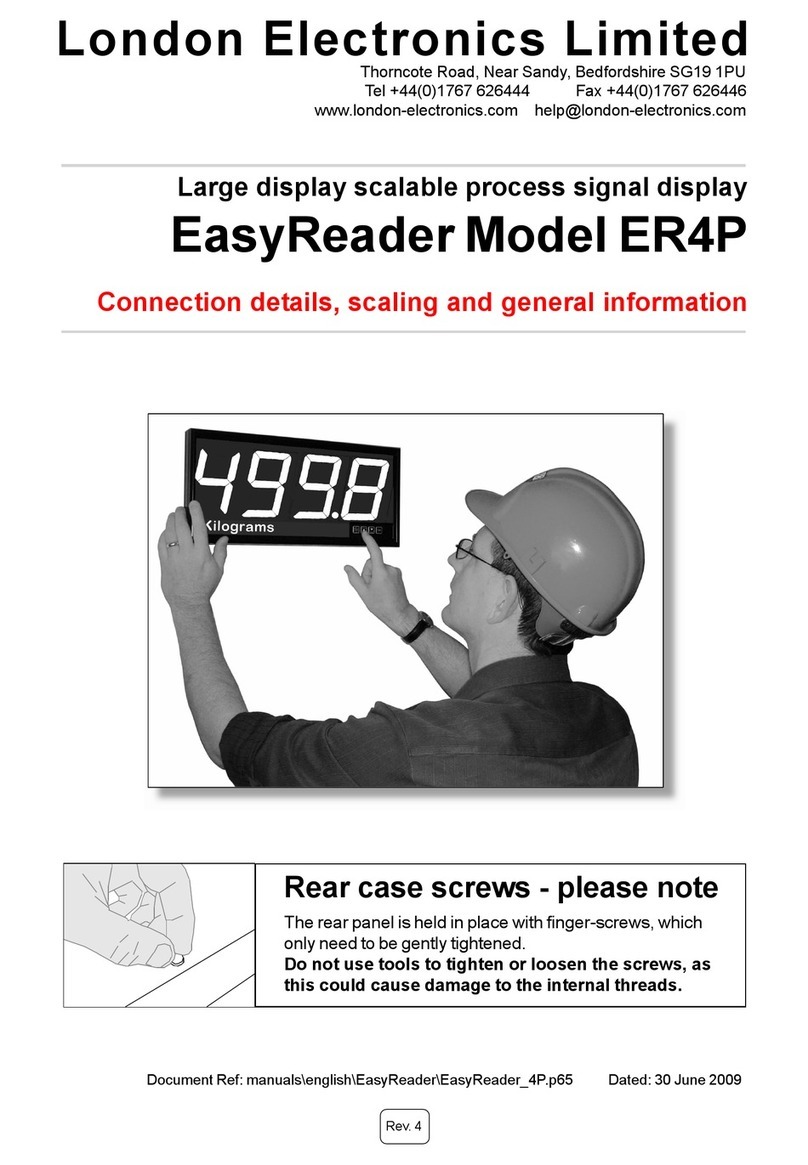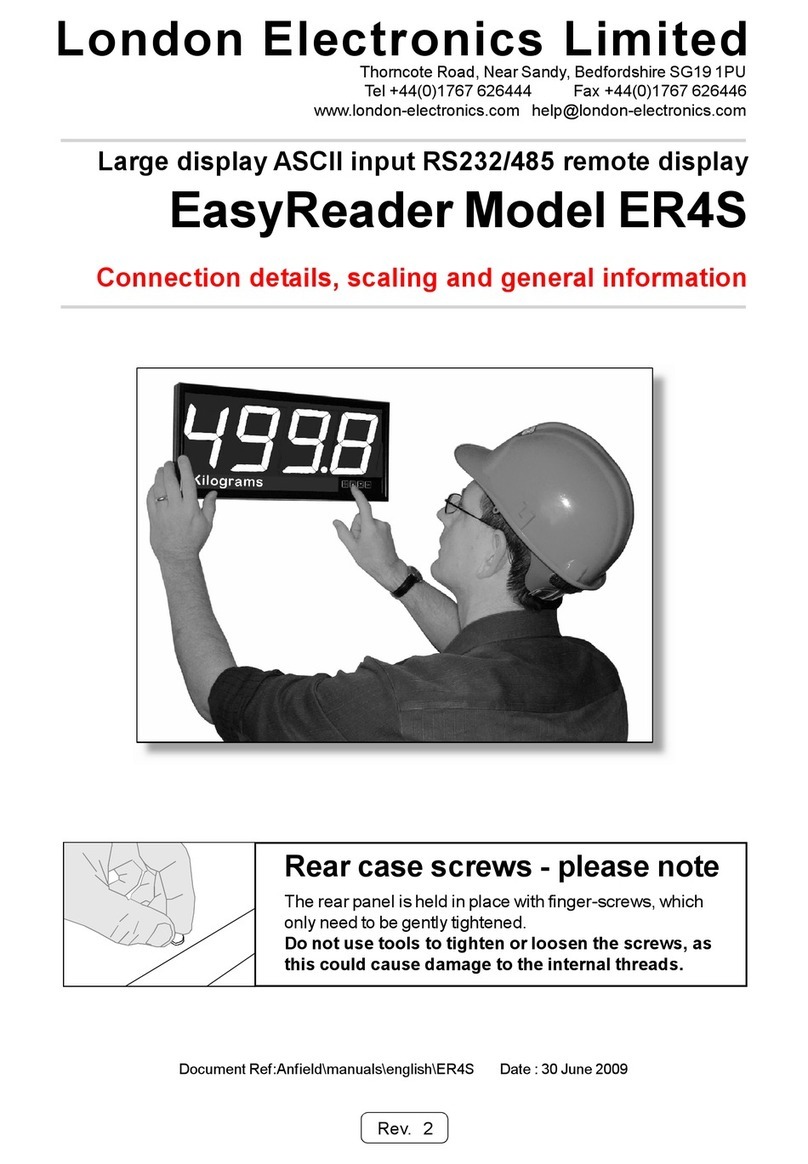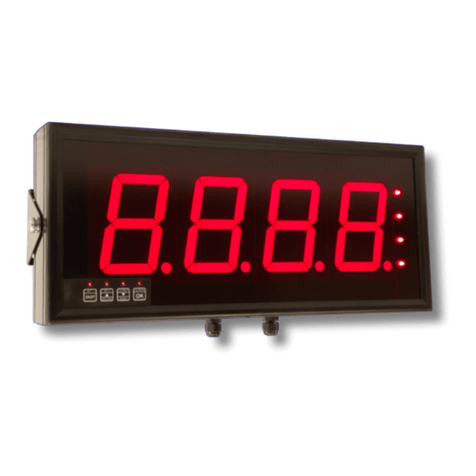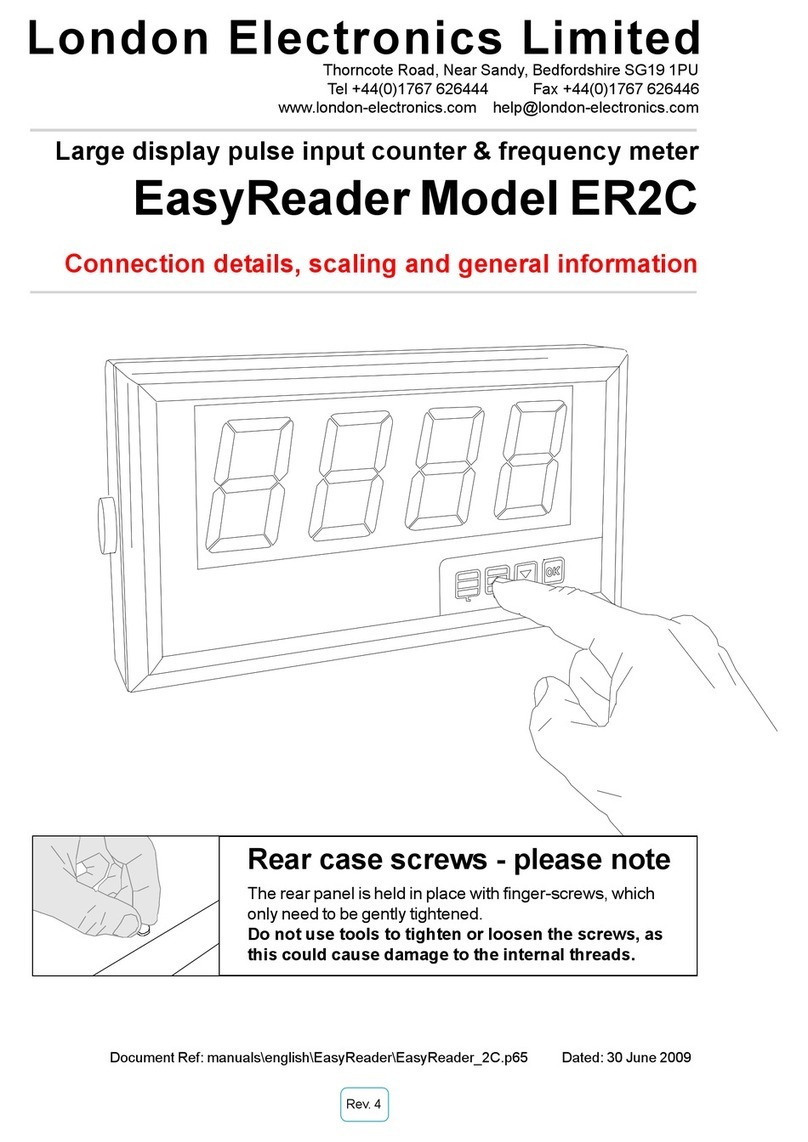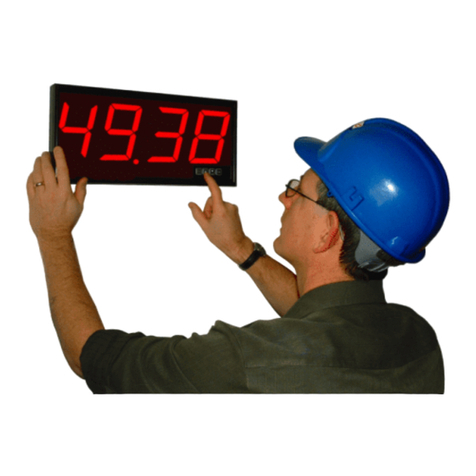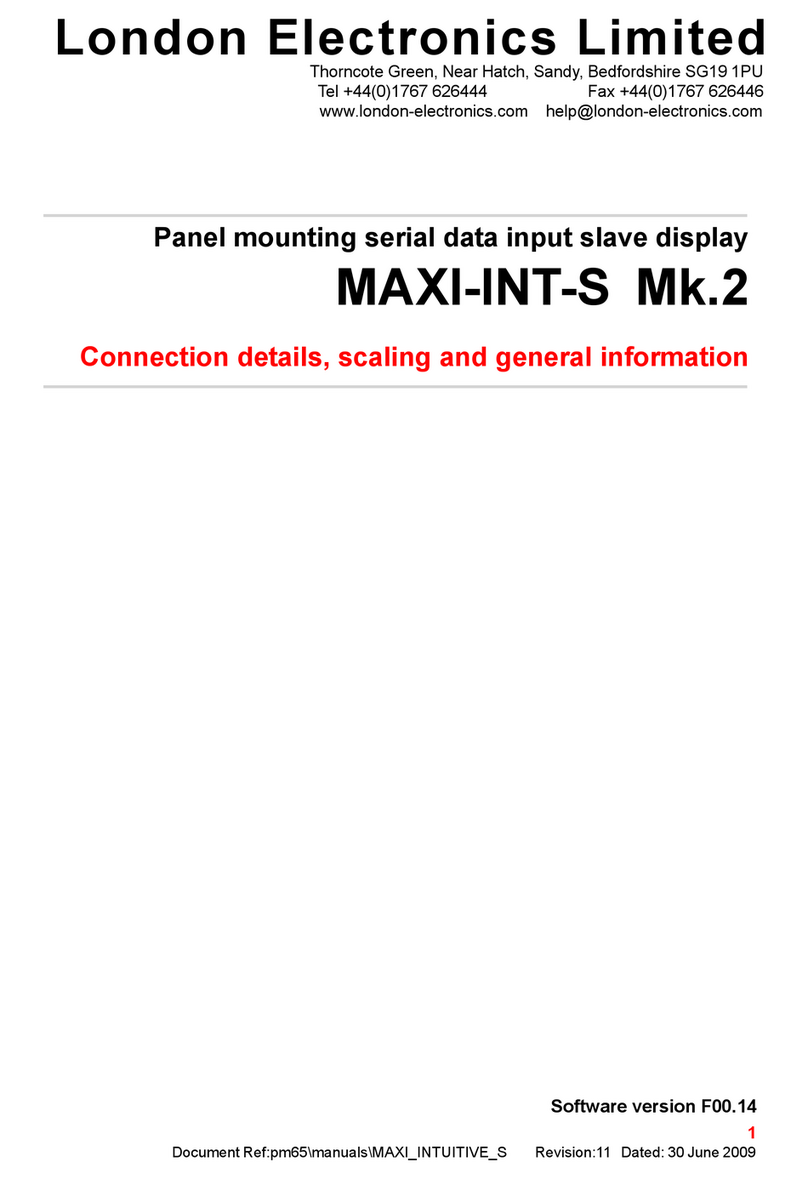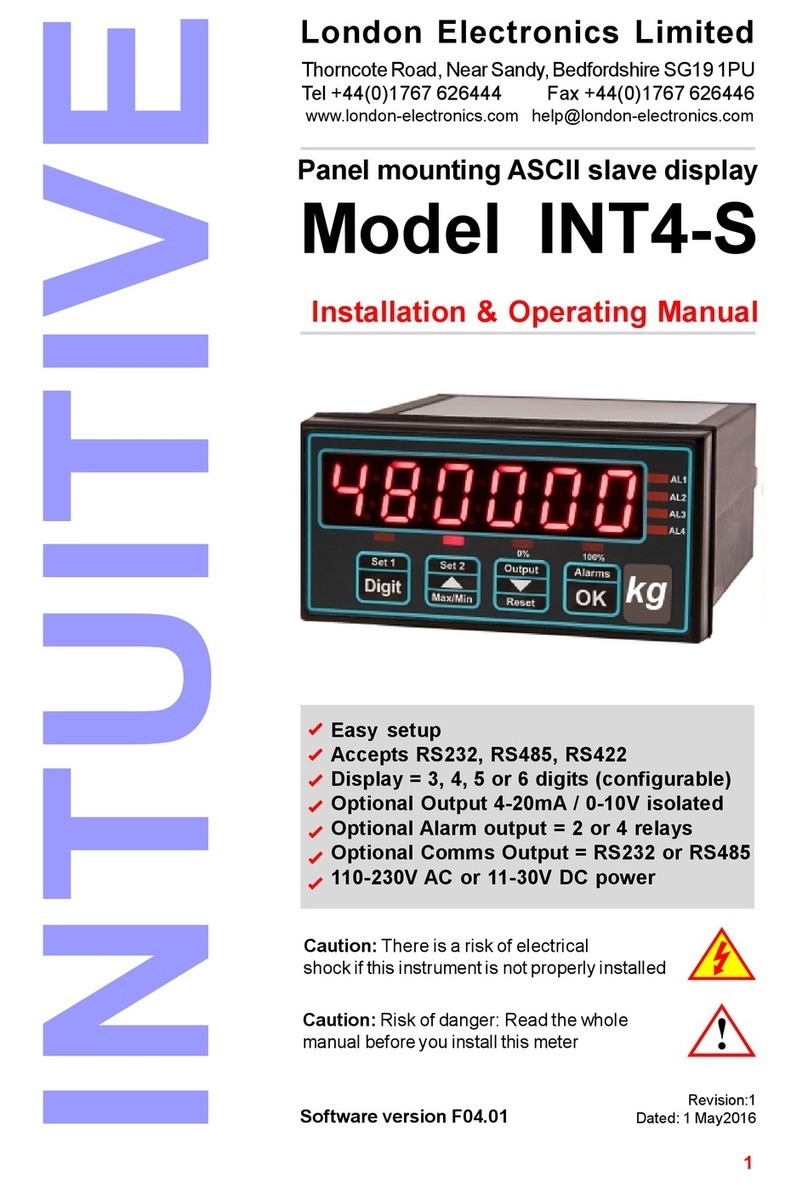8
SIGNAL, DATA AND CONTACT CLOSURE CONNECTIONS
4.2 Typical Input Connections
The most common input sensor types are shown below, with a wiring guide, to assist you in the
installation of your totaliser. Only one input is shown, as they both have identical input circuitry.
Because the pullup resistors are not independent ( both inputs will be pulled up or down), you
should choose sensors which require the same pullup format, if using both inputs. In other
words, do not use a PNP sensor for one input and an NPN sensor for the other. You could ,
however, have a NPN sensor for one input and a contact closure for the other.
4.3 RS485 Data Output option (Factory installed only):
The Serial Data O/P cable allows you to feed the measured reading to serial input slave displays,
such as our S17XX series, or small 1/8 DIN SER-06 models, for remote indication purposes.
The output is continuous, with a new string transmitted at roughly 1 second intervals. The format is
the reading itself, including decimal point character, in ASCII, terminated by a Carriage Return.
The data format is 1 start bit, 8 data bits and 1 stop bit. The Baud rate is selectable, and is determined
by the fourth character of the Configuration Number. Extension cable should be screened, high
quality data cable, and should be routed away from sources of electrical noise such as motors,
power cables, inductive devices, discharge lighting circuits etc. Do not earth the screen of the data
cable, however, as it is already connected to internal earth on the display itself.
Up to 32 slaves having RS485 inputs can be driven from the output port.
NPN
To totaliser
I/P. ASignal
+ Excitation
Common
Sig.
+
-
Jumper Settings: Fit Debounce jumper if input rate is less than 10 per second
Fit Pull-up jumper
If display is to sense when item approaches sensor, fit falling edge jumper.
If display is to sense when item leaves sensor, fit rising edge jumper.
PNP
To totaliser
I/P. ASignal
+ Excitation
Common
Sig.
+
-
Jumper Settings: Fit Debounce jumper if input rate is less than 10 per second
Fit Pull-down jumper
If display is to sense when item approaches sensor, fit rising edge jumper.
If display is to sense when item leaves sensor, fit falling edge jumper.
To totaliser
I/P. ASignal
Common
Jumper Settings: Fit Debounce jumper. Input rate must not be greater than 10 closures per second
Fit Pull-up jumper
If display is to sense when contacts close, fit falling edge jumper.
If display is to sense when contacts open , fit rising edge jumper.
